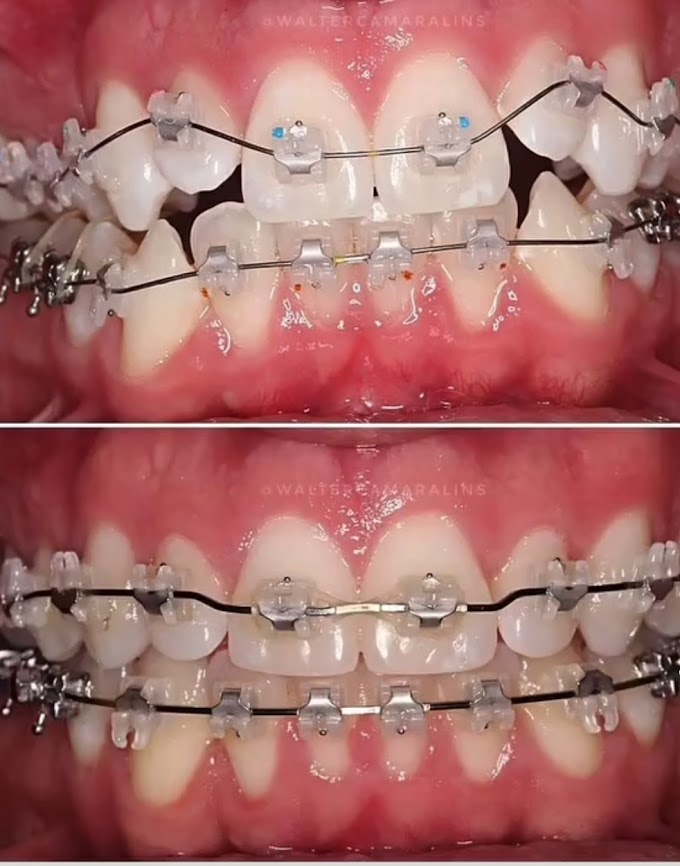The Ultimate Guide to Orthodontic Braces: Everything You Need to Know
Orthodontic braces are a common solution for achieving a perfect smile. Whether you’re considering braces for yourself or a loved one, this guide will provide you with all the essential information you need. From understanding the different types of braces to knowing what to expect during the treatment process, we have you covered.
What Are Orthodontic Braces?
Orthodontic braces are devices used to correct crooked teeth and jaws. They work by applying continuous pressure over time to move teeth into the correct position. Braces can address various dental issues, including crowded teeth, gaps, and bite issues.
Types of Orthodontic Braces
There are several types of braces available, each with its own advantages and disadvantages:
1. Metal Braces
Metal braces are the most traditional and commonly used type. They consist of metal brackets and wires that are attached to the teeth. Modern metal braces are smaller and more comfortable than those in the past1.
2. Ceramic Braces
Ceramic braces are similar to metal braces but use clear or tooth-colored brackets that blend in with the teeth. They are less noticeable but can be more fragile and expensive2.
3. Lingual Braces
Lingual braces are attached to the back of the teeth, making them invisible from the front. They are custom-made and can be more challenging to clean and adjust3.
4. Clear Aligners
Clear aligners, such as Invisalign, are removable trays that gradually move teeth into place. They are nearly invisible and can be removed for eating and cleaning, but they may not be suitable for severe cases4.
How Do Braces Work?
Braces work by applying continuous pressure to the teeth, gradually moving them into the desired position. The process involves several components:
Brackets: Small squares bonded to the front of each tooth.
Archwires: Thin metal wires that connect the brackets and guide the teeth.
Bands: Elastic bands that hold the archwires in place.
Spacers: Small rubber bands placed between teeth to create space.
Regular adjustments by an orthodontist ensure that the braces continue to apply the correct amount of pressure to move the teeth.
The Treatment Process
Initial Consultation
The first step in getting braces is an initial consultation with an orthodontist. During this visit, the orthodontist will examine your teeth, take X-rays, and discuss your treatment options.
Fitting the Braces
Once a treatment plan is established, the braces will be fitted. This process involves cleaning the teeth, applying a bonding agent, and attaching the brackets and wires.
Regular Adjustments
Throughout the treatment, you’ll need to visit the orthodontist regularly for adjustments. These visits ensure that the braces are functioning properly and that the teeth are moving as planned.
Removing the Braces
Once the teeth have moved into the correct position, the braces will be removed. This process is relatively quick and painless.
Retainers
After the braces are removed, you'll need to wear a retainer to maintain your new smile. Retainers can be removable or fixed and are usually worn for several months to a few years.
Benefits of Orthodontic Braces
Orthodontic braces offer numerous benefits, including:
Improved Appearance: Straighter teeth enhance your smile and boost self-confidence.
Better Oral Health: Correcting misaligned teeth can reduce the risk of tooth decay, gum disease, and other dental issues.
Enhanced Functionality: Properly aligned teeth improve chewing and speaking abilities.
Long-Term Results: With proper care, the results of orthodontic treatment can last a lifetime.
Common Concerns and FAQs
How painful are braces?
It’s common to experience some discomfort when braces are first fitted and after adjustments. Over-the-counter pain relievers and orthodontic wax can help alleviate any pain.
How Long Will I Need to Wear Braces?
The duration of treatment varies depending on the complexity of the case. On average, braces are worn for 18 to 24 months5.
Can Adults Get Braces?
Absolutely! Orthodontic treatment is not limited to children and teenagers. Many adults successfully achieve their desired smile with braces.
How Do I Care for My Braces?
Proper care is essential to ensure the success of your treatment. Here are some tips:
Brush and Floss Regularly: Use a soft-bristled toothbrush and fluoride toothpaste. Floss daily using a floss threader or water flosser.
Avoid Certain Foods: Steer clear of hard, sticky, and sugary foods that can damage the braces.
Attend Regular Check-Ups: Keep up with your orthodontic appointments for adjustments and monitoring.
Cost of Orthodontic Braces
The cost of braces can vary widely based on factors such as the type of braces, the complexity of the case, and the location of the orthodontist. On average, traditional metal braces can cost between $3,000 and $7,000. Many orthodontists offer payment plans and financing options to make treatment more affordable.
Conclusion
Orthodontic braces are a highly effective solution for achieving a beautiful, healthy smile. By understanding the different types of braces, the treatment process, and how to care for your braces, you can make an informed decision and enjoy the benefits of a straighter smile.
If you’re considering orthodontic treatment, consult with a qualified orthodontist to discuss your options and create a customized treatment plan. With the right care and commitment, you’ll be on your way to a confident, radiant smile.



